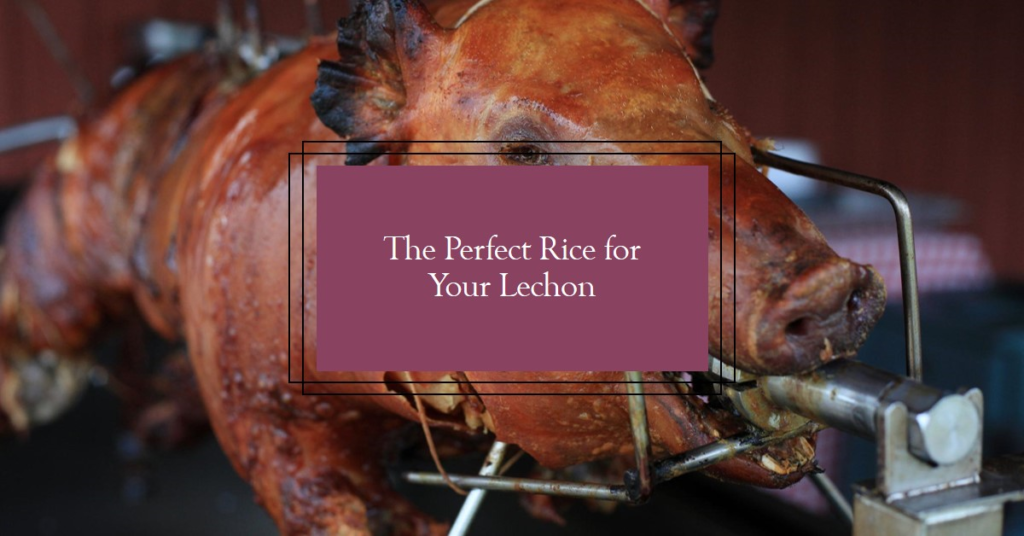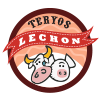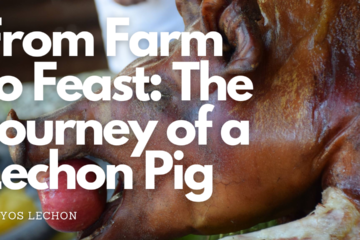Picture this: you’re at a bustling Filipino fiesta, the aroma of roasting lechon filling the air. As you approach the star of the show, a glistening, golden-brown pig on a spit, your mouth waters. But wait! Something’s missing. You scan the table and see a lineup of rice options, each vying to be the Robin to your lechon’s Batman. Which one will complete your culinary dynamic duo? In the Philippines, where rice is as essential as air, choosing the right grain to pair with your lechon isn’t just a decision—it’s a sacred ritual.

In this flavorful journey, we’ll dive into the steamy world of rice to find the ultimate sidekick for our beloved lechon. Whether you’re a high school student prepping for your family’s next big gathering or just someone who loves a good pork-and-rice combo, this guide will help you make a choice that’s as spot-on as your crush’s Instagram selfies. So, grab a fork (or your hands—we don’t judge), and let’s dig into this feast of knowledge!
Why Rice Matters in Lechon’s Love Story
In the Philippines, rice isn’t just a side dish; it’s the heart of every meal. As food historian Felice Sta. Maria puts it, “To the Filipino, rice is life.” Now, imagine lechon as a heartthrob—charming, popular, and oh-so-desirable. Rice is its faithful partner, always there to support and complement. The right rice can elevate your lechon experience from a simple meal to an epic food romance.
But why does it matter so much? First, rice helps balance the richness of lechon. The succulent, fatty goodness of roast pig can be overwhelming on its own. Rice provides a neutral base that lets you appreciate lechon’s complex flavors without feeling like you’re swimming in grease. Second, rice’s texture contrasts beautifully with lechon’s crispy skin and tender meat. It’s a textural tango that keeps your taste buds on their toes.
The Contenders: Rice Types Competing for Lechon’s Heart
White Rice: The Classic Sweetheart
- Description: Soft, fluffy, and uncomplicated
- Lechon compatibility: High; its neutral flavor lets lechon shine
- Fun fact: The average Filipino eats about 100 kg of rice per year, mostly white rice!
Java Rice: The Colorful Cool Kid
- Description: Yellow, slightly savory from turmeric or safflower
- Lechon compatibility: Good; adds a subtle, spicy note
- Celebrity endorsement: Java rice gained fame when it was featured in Anthony Bourdain’s visit to a Manila lechon spot
Garlic Rice (Sinangag): The Aromatic Attraction
- Description: White rice fried with garlic, giving it a toasty flavor
- Lechon compatibility: Excellent; garlic complements pork beautifully
- Local wisdom: In Cebu, many believe that sinangag helps “cut through” lechon’s fattiness
Red Rice: The Healthy Hipster
- Description: Nutty, chewy, packed with antioxidants
- Lechon compatibility: Moderate; its strong flavor can compete with lechon
- Health hook: Red rice’s antioxidants may help offset the “guilty” in your guilty pleasure
Coconut Rice: The Tropical Temptation
- Description: White rice cooked in coconut milk, subtly sweet
- Lechon compatibility: Good, especially with lechon from Southern Philippines
- Regional pride: In Mindanao, coconut rice often accompanies their distinctively spiced lechon
Adlai: The Gluten-Free Charmer
- Description: A rice-like grain, slightly nutty and chewy
- Lechon compatibility: Good; its texture stands up to lechon’s richness
- Modern twist: Health-conscious Manila restaurants now offer adlai as a gluten-free rice option
Rice Medley: The Indecisive’s Dream
- Description: A mix of white, red, and black rice
- Lechon compatibility: Varied; offers multiple textures and flavors
- Instagram worthy: Its colorful appearance makes it a social media favorite
Pandan Rice: The Fragrant Fashionista
- Description: White rice with a vanilla-like aroma from pandan leaves
- Lechon compatibility: Good; its subtle sweetness suits some lechon styles
- Celebrity chef tip: Chef Claude Tayag suggests pandan rice with his famous Pampanga lechon
The Ultimate Lechon-Rice Pairings: A Regional Romance Tour
Cebu Lechon ♥ White Rice
- Why they click: Cebu lechon’s bold, herbal flavors are best appreciated with plain rice
- Local saying: “Sa Sugbo, ang lechon mao ra’y star.” (In Cebu, lechon is the only star.)
La Loma Lechon ♥ Garlic Rice
- Why they click: Manila’s famous lechon hub loves the extra punch from sinangag
- Street cred: La Loma’s lechon + sinangag combo is a late-night street food legend
Negros Lechon ♥ Java Rice
- Why they click: Negros’ slightly sweet lechon pairs well with Java rice’s subtle spice
- Sugar connection: Both have links to the region’s sugar industry—lechon is often from pigs fed with molasses, while Java rice’s color comes from turmeric or safflower grown nearby
Southern Mindanao Lechon ♥ Coconut Rice
- Why they click: The region’s spicier lechon loves coconut rice’s cooling effect
- Fun fact: Some locals believe the oil in coconut rice helps soothe the burn from their famous spicy lechon
Healthy Eater’s Lechon ♥ Red Rice or Adlai
- Why they click: These grains make health-conscious folks feel better about indulging
- Doctor’s orders: Some Filipino nutritionists suggest these options to make lechon meals more balanced.
The Science Behind the Perfect Pair
It’s not just about taste—there’s science to this pairing game! Dr. Maria Cruz, a food scientist at the University of the Philippines, explains: “Lechon’s protein and fat need the carbohydrates in rice for balanced nutrition. But it’s also about mouthfeel. Rice’s starch granules absorb lechon’s savory juices, creating a harmonious texture that prolongs flavor release.”
Additionally, the right rice can help with digestion. Heavy, fatty foods like lechon are easier to process when paired with high-fiber options like red rice or adlai. So, your rice choice isn’t just a taste decision; it’s a digestive wingman!
Personal Preferences: No Wrong Answers
While science and tradition offer guidelines, personal taste is king. Christian Luna, a high school student from Makati, shares, “I love pandan rice with lechon. My lola thinks it’s weird, but the sweet hint reminds me of family gatherings.” Meanwhile, Sofia Reyes from Cebu insists, “White rice, period. Anything else is just trying too hard.”
The beauty of the lechon-rice relationship is its flexibility. Like any great partnership, it’s about finding what works for you. Some like it traditional; others prefer a modern twist. As long as both parties—the lechon and the rice—make each other better, you’ve found a match made in food heaven.
So, what’s the verdict in this gastronomic love story? Which rice truly is lechon’s soulmate? The answer, like in any rom-com, isn’t a simple one. Each rice type brings its own charm to the table, appealing to different tastes, regions, and even health preferences.
If you’re a purist seeking to showcase your lechon’s complex flavors, white rice is your classic lead. For those who want a bit of character development, garlic rice or Java rice adds an interesting subplot. Health-conscious viewers might prefer the wholesome appeal of red rice or adlai. And if you’re into exotic locations, coconut or pandan rice offers a tropical backdrop.
In the end, the best lechon-rice pairing is the one that makes your taste buds stand up and applaud. It’s about creating a memorable meal, much like a blockbuster movie—satisfying, well-balanced, and leaving you excited for the sequel (hello, leftovers!).
So next time you’re at a Filipino feast, staring down that glorious lechon, take a moment to consider its rice partner. Whether you go classic or experimental, remember: in this culinary rom-com, there’s a perfect grain for every swine. Now, grab your chosen rice, slice into that crispy lechon skin, and let your own flavor-packed love story unfold. Kain na! (Let’s eat!)




0 Comments